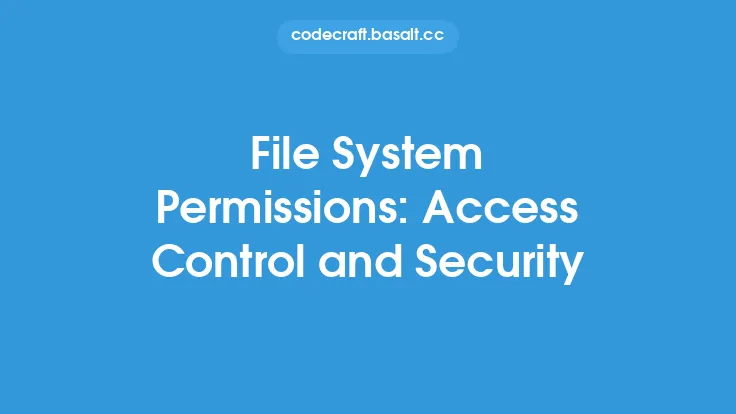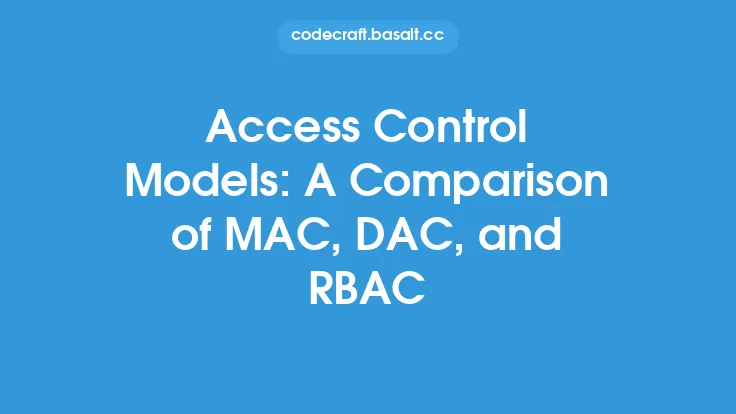Memory protection is a critical component of operating systems, ensuring that each process runs in its own isolated environment, preventing unauthorized access to other processes' memory spaces. This is achieved through a combination of hardware and software mechanisms, which work together to enforce memory access control and prevent common errors such as buffer overflows and data corruption. At the heart of memory protection lies the concept of memory segmentation, where the physical memory is divided into smaller segments, each with its own set of access permissions.
Introduction to Memory Protection Mechanisms
Memory protection mechanisms are designed to prevent a process from accessing memory locations that it is not authorized to access. This includes preventing a process from reading or writing to another process's memory space, as well as preventing a process from accessing sensitive operating system data. The primary goal of memory protection is to ensure that each process runs in a sandboxed environment, where it cannot interfere with other processes or compromise the integrity of the operating system. Memory protection mechanisms can be implemented using a combination of hardware and software components, including memory management units (MMUs), page tables, and access control lists (ACLs).
Memory Access Control
Memory access control is a critical component of memory protection, ensuring that each process can only access memory locations that it is authorized to access. This is achieved through the use of access control lists (ACLs), which define the permissions for each memory segment. ACLs can be used to specify read, write, and execute permissions for each memory segment, allowing the operating system to enforce strict access control policies. In addition to ACLs, memory access control can also be enforced through the use of page tables, which map virtual memory addresses to physical memory addresses. By controlling access to page tables, the operating system can prevent a process from accessing unauthorized memory locations.
Hardware-Based Memory Protection
Hardware-based memory protection mechanisms are implemented using specialized hardware components, such as memory management units (MMUs) and memory protection units (MPUs). MMUs are responsible for translating virtual memory addresses to physical memory addresses, while MPUs are responsible for enforcing access control policies. Hardware-based memory protection mechanisms provide a high level of security and performance, as they can operate at the hardware level, preventing unauthorized access to memory locations. Examples of hardware-based memory protection mechanisms include the x86 architecture's Memory Protection Unit (MPU) and the ARM architecture's Memory Management Unit (MMU).
Software-Based Memory Protection
Software-based memory protection mechanisms are implemented using software components, such as operating system kernels and device drivers. Software-based memory protection mechanisms provide a flexible and customizable way to enforce access control policies, as they can be easily modified and updated. Examples of software-based memory protection mechanisms include the Linux kernel's memory protection module and the Windows operating system's memory protection API. Software-based memory protection mechanisms can be used to enforce access control policies at the process level, preventing a process from accessing unauthorized memory locations.
Virtualization and Memory Protection
Virtualization technology provides a way to run multiple operating systems on a single physical machine, each with its own isolated environment. Virtualization and memory protection are closely related, as virtualization requires strong memory protection mechanisms to prevent a virtual machine from accessing unauthorized memory locations. Virtualization platforms, such as VMware and VirtualBox, use a combination of hardware and software mechanisms to enforce memory protection, including MMUs, page tables, and ACLs. By providing a high level of memory protection, virtualization platforms can ensure that each virtual machine runs in a secure and isolated environment.
Memory Protection and Security
Memory protection is a critical component of operating system security, as it prevents unauthorized access to sensitive data and prevents common errors such as buffer overflows and data corruption. Memory protection mechanisms can be used to prevent a wide range of security threats, including code injection attacks, data tampering attacks, and privilege escalation attacks. By enforcing strict access control policies, memory protection mechanisms can prevent a process from accessing unauthorized memory locations, reducing the risk of security breaches and data compromise. In addition to preventing security threats, memory protection mechanisms can also be used to detect and respond to security incidents, providing a high level of security and integrity.
Conclusion and Future Directions
In conclusion, memory protection and access control mechanisms are critical components of operating systems, ensuring that each process runs in its own isolated environment and preventing unauthorized access to other processes' memory spaces. By providing a high level of memory protection, operating systems can prevent common errors such as buffer overflows and data corruption, and prevent a wide range of security threats. As operating systems continue to evolve and become more complex, the importance of memory protection and access control mechanisms will only continue to grow. Future research directions include the development of new memory protection mechanisms, such as hardware-based memory protection and software-based memory protection, and the integration of memory protection mechanisms with other operating system components, such as virtualization and security. By providing a high level of memory protection and access control, operating systems can ensure the security, integrity, and reliability of computer systems.





